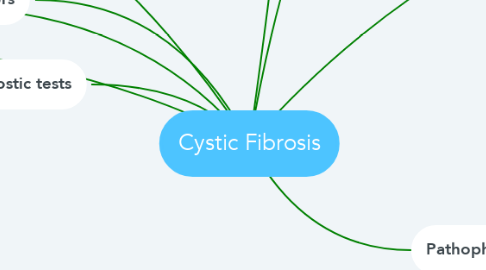Cystic Fibrosis
by John Wilson


1. Race - most common in white, northern European ancestry
2. Family History
3. Symptoms
3.1. Early: Meconium ileus, salty sweat, poor weight, failure to thrive, frequent coughing/wheezing, thick mucus, greasy pale stools
3.2. Chronic cough, recurrent chest colds, wheezing, shortness of breath, frequent sinus/lung infections, constipation, pancreatitis, hyperglycemia, nasal plyps, bronchiectasis, sterility, abdominal distension, steatorrhea, cirrhosis
4. Risk factors
5. Diagnostic tests
5.1. New born screening and blood test immunoreactive trypsinogen (IRT/DNA and IRT/IRT1/DNA)
5.2. Sweat chloride test - choride concentration >60mmol/L
5.3. Chest radiograph, pulmonary function test, and arterial blood gas used to monitor disease progression
6. Treatment
6.1. Breathing treatments, annual flu vaccinations, symptomatic respiratory treatment
6.2. Airway clearance therapy - flutter valve therapy, mechanical ventilation, manual chest percussion, high - frequency vest-assisted chest compression
6.3. Inhaled hypertonic saline, mucolytics, antibiotics, anti-inflammatories
6.4. Nutritional therapy and supplementation
6.5. Lung Transplant
7. Autosomal recessive gene, appears when two carriers have children
8. Genetics
8.1. Mutation of Cystic fibrosis transmembrane conductance regulator (CFTR) gene
8.1.1. Disrupts function of chloride channels preventing regulation of chloride ions and water across cell membrane

